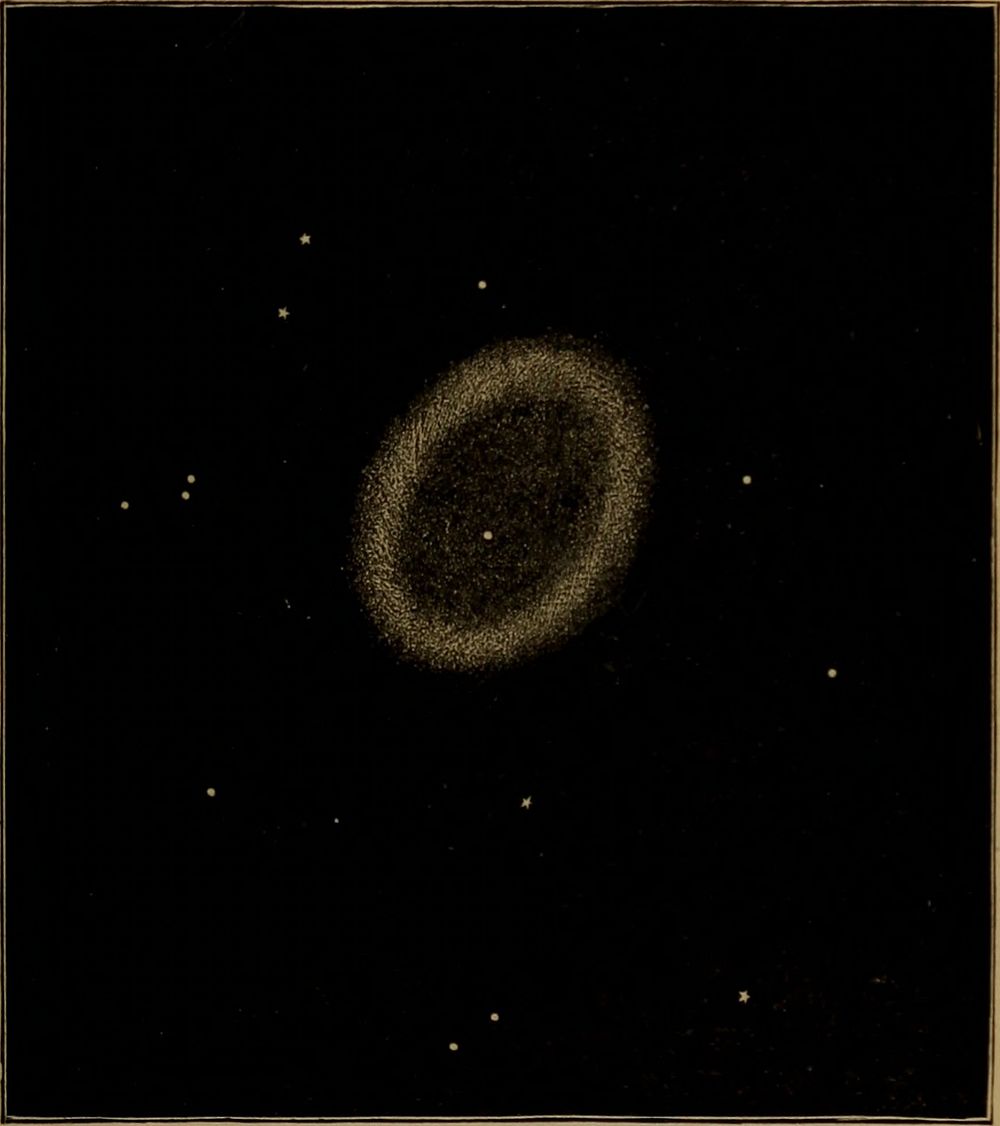https://creativecommons.org/publicdomain/zero/1.0/https://www.rawpixel.com/image/9976026

Identifier: astronomyforhigh00newc (find matches)Title: Astronomy for high schools and collegesYear: 1881 (1880s)Authors: Newcomb, Simon, 1835-1909 Holden, Edward Singleton, 1846-1914, joint authorSubjects: AstronomyPublisher: New York, H. Holt and CompanyContributing Library: The Library of CongressDigitizing Sponsor: The Library of CongressView Book Page: Book ViewerAbout This Book: Catalog EntryView All Images: All Images From BookClick here to view book online to see this illustration in context in a browseable online version of this book.Text Appearing Before Image:Fig. 127.—the trifid nebula. more stars can be counted. With the telescope, over a hundredstars are seen, A view of these is given in the map accompanyingthe description of the Pleiades, Fig. 113, p. 425. This group con-tains Tempels variable nebula, so called because it has been sup-posed to be subject to variations of light. This is probably not avariable nebula. NEBULJE AND CLUSTERS. 463 The clusters represented in Figs. 129 and 130 are good examplesof their classes. The first is globular and contains several thousandsmall stars. The central regions are densely packed with stars,and from these radiate curved hairy-looking branches of a spiralform. The second is a cluster of about 200 stars, of magnitudesvarying from the ninth to the thirteenth and fourteenth, in whichthe brighter stars are scattered in a somewhat unusual mannerText Appearing After Image:Fig. 128.—the ring nebula in lyra. over the telescopic field. This cluster is an excellent example ofthe compressed form so frequently exhibited. In clusters ofthis class the spectroscope shows that each of the individual starsis a true sun, shining by its native brightness. If we admit that acluster is real—that is, that we have to do w4th a collection of stars physically connected- 39 a fact of observation that in general the globular clusters become important. Itthe stars composing such 464 ASTRONOMY. clusters are about of equal magnitude, and are more condensed atthe centre than at the edges. They are probably subject to centralpowers or forces. This was seen by Sir William Herschel in 1789.He says : Not only were round nebulae and clusters formed by centralpowers, but likewise every cluster of stars or nebula that shows agradual condensation or increasing brightness toward a centre.This theory of central power is fully established on grounds of ob-servation which cannot be ovNote About ImagesPlease note that these images are extracted from scanned page images that may have been digitally enhanced for readability - coloration and appearance of these illustrations may not perfectly resemble the original work.
Original public domain image from Wikimedia Commons
Public DomainFree CC0 image for Personal and Business use